The Sweet 16 is established, and while there were some mild surprises, the overwhelming majority of trends we saw continued into this year's NCAA tournament.
Trend No. 1
The committee screwed up -- again. The Bilastrator told you weeks ago, and told the committee, that seeding was far more important than selection, and that it was likely that this committee would screw it up. Of course, it did. To name just a few of many: Wichita State as a 10-seed was an absolute joke and denied us the Shockers in the second weekend, where they belonged. Wisconsin as a No. 8 seed was a similar joke, and similarly, it wasn't very funny. To have the Badgers seeded behind Minnesota, a team that finished behind Wisconsin in the Big Ten and lost to the Badgers twice, behind Maryland, and on the same line as Northwestern was patently absurd. That jobbed the Badgers, yes, but also jobbed the No. 1 overall seed, Villanova. The tournament might be idiot-proof, but we certainly seem to test that every single year. Enough.
Trend No. 2
The majors dominate the Sweet 16, as is the norm. The Bilastrator tells you annually that the first weekend gives us a few upsets that we can go crazy about, but by Sunday night, things normalize, and there are 13 major conference teams and three mid-majors in the Sweet 16. And, in the past, the mid-majors have usually been some combination of Gonzaga, Wichita State, Xavier and Butler. (Right now, Big East fans are steaming that Butler and Xavier might be called mid-major. They will not be. They are now major-conference teams). Last year, there were 15 major-conference teams and Gonzaga. This year, there are 15 major-conference teams and Gonzaga. Parity? Please. Don't tell The Bilastrator about close games. This is basketball. There have always been close games. Forever.
Trend No. 3
The Power 5 conferences dominate the Sweet 16, as is the norm. There are 13 power-conference teams in the Sweet 16. The ACC suffered a calamity, with only one of its nine teams making it (North Carolina). The Big Ten advanced three teams (Wisconsin, Purdue and Michigan). The Big 12 joined the Big Ten with a trio (Kansas, West Virginia and Baylor), as did the much-maligned SEC (Kentucky, Florida and South Carolina) and the Pac-12 (Arizona, Oregon and UCLA). The Big East put two teams in the Sweet 16 (Butler and Xavier), and the West Coast Conference matched the ACC with a lone participant (Gonzaga).
Trend No. 4
Officiating rationalizing. The officials have done a good job -- overall. It is abundantly clear to even the most casual observer that the Freedom of Movement initiative has been a great success, and the officials deserve a ton of credit for that. But the officiating mistakes that have been made in this tournament have come with too much rationalizing. The officials are the law of the court, and everybody respects the authority of the officials. Nobody stormed the floor with torches and pitchforks to overturn a decision. No game was played under protest. All understand that there is human error in the game, and we accept that fact. However, when discussing whether something was done correctly or not, the officials and their supervisors need to stop making excuses. When the officials missed the clear basket-interference call in the Northwestern-Gonzaga game, we don't need to hear that officials get it right 90 percent of the time or that it was difficult for outside observers to see in real time. The call was clearly missed. Just admit it. Stop rationalizing. And when the Flagrant 1 call was made in the Seton Hall-Arkansas game and an official is asked to explain it, just say it was within the judgment and discretion of the officials and goes uncalled at least as often as it is called. Because it was clear from other games in the first weekend (most notably USC-Baylor) that blatantly failing to make a play on the ball is often called a common foul, and that officials have to contort themselves to explain the difference in the two different calls on the same play. They cannot explain it. Just admit it.
Trend No. 5
Three No. 1 seeds made it to the Sweet 16, along with two No. 2 seeds, three No. 3 seeds, four No. 4 seeds, two No. 7 seeds, one No. 8 seed and one No. 11 seed. The No. 8 seed is Wisconsin, which was really a No. 4 or No. 5 seed. That comes out to 12 teams on the top four seed lines. All Sweet 16 teams are rated in the top 30 of the KenPom.com analytic ratings.
Trend No. 6
The Bilastrator will, again, provide you with the most comprehensive and accurate picture of the basketball landscape by using all of the most relevant analytics, run through the powerful gray matter of The Bilastrator's gigantic, hairless cranium and using his unmatched basketball judgment. As always, you're welcome.
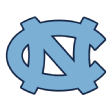
1. North Carolina Tar Heels
The Tar Heels are banged up and shot it poorly but still managed to beat Arkansas. North Carolina has scored 84 paint points in its two tournament games thus far, third most in the field behind Baylor (90) and Louisville (88). Still, it hasn't been its best. When you play poorly and win, that is usually a good sign. But the Heels will have to play much better against Butler to reach the Elite Eight.
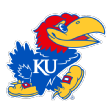
2. Kansas Jayhawks
The Jayhawks played inspired basketball against Michigan State, especially in the second half. It is clear that, while Frank Mason III and Devonte' Graham make up the best backcourt in the country, Josh Jackson is a difference-maker, and they don't make many of him. Jackson's 23 points against Michigan State were the most by a Jayhawks freshman in an NCAA tournament game. Kansas averaged 95.0 points in the first two rounds, the most in the tournament field. The Jayhawks have scored 90 points in consecutive NCAA tournament games for the second time in school history (three straight in 1993). The Jayhawks have had the most efficient half-court offense in the tournament, averaging 1.44 points per half-court possession.
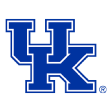
3. Kentucky Wildcats
The Wildcats are playing much better defense, which was the only thing standing in their way of being a title winner. Bam Adebayo has 28 rebounds in the NCAA tournament, the most in the field and the most through the first two rounds of an NCAA tournament in Kentucky history. Adebayo is the third Kentucky player to have a double-double in each of his first two career NCAA tournament games (Julius Randle in 2014, Frank Ramsey in 1951).The toughest draw of the No. 2 seeds still belongs to Kentucky. The Wildcats will have to play UCLA and perhaps North Carolina to reach the Final Four.
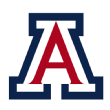
4. Arizona Wildcats
The win against Saint Mary's was a good one, although Arizona did not play particularly well. Still, against the Gaels, Lauri Markkanen became the first Arizona freshman with a double-double in the NCAA tournament since Channing Frye in the second round in 2002 against Wyoming. Michael Wright is the only other Arizona freshman to do so, recording a double-double in 1999.
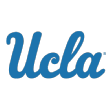
5. UCLA Bruins
The Bruins are defending better, and the use of the 3-2 zone has been a factor. Still, the offensive firepower is the most impressive feature of this team. UCLA can outscore anyone. UCLA is shooting 52.1 percent from the field this season, highest in the nation and on pace to be the best since the 2006-07 Florida team that won the national title (52.6 percent). The Bruins are making 56.2 percent of their shots in the NCAA tournament, best in the field. With his nine assists Sunday, Lonzo Ball is now six assists away from tying Jason Kidd for second-most assists in a season in Pac-12 history.

6. West Virginia Mountaineers
The Mountaineers need more shot attempts and more rebounds to beat the best teams. But if they shoot the ball the way they did against Notre Dame, they don't need any of that. West Virginia will be tough for Gonzaga to handle, and the biggest test for its guards. West Virginia has shot 52 percent from 3-point range in the NCAA tournament, best of any team that has played at least two games.

7. Oregon Ducks
That Oregon was able to reach the Sweet 16 without Chris Boucher is remarkable. The changing defenses and duo of Dillon Brooks and Tyler Dorsey can take the Ducks one more round, if they guard the 3-point line well. Oregon is averaging 25.5 transition points per game in the NCAA tournament, second most among Sweet 16 teams (North Carolina, 27.5). The Ducks are making 75 percent of their shots in transition, best in the field (minimum 10 attempts).

8. Gonzaga Bulldogs
The Zags are very good. The draw of West Virginia is a tough one and will put a ton of pressure on the guards to handle the ball and finish plays. This is not a game in which Przemek Karnowski will be able to play big minutes, and that will hurt Gonzaga. The Zags, though, have held opponents to 36.3 percent shooting in the NCAA tournament, the third-best FG percentage defense in the tournament and second best among Sweet 16 teams.
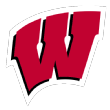
9. Wisconsin Badgers
As long as Bronson Koenig shoots the ball as well as he did against Villanova, Wisconsin can beat Florida and will have a legitimate shot at a Final Four -- again. Koenig has made 11 3s through the first two rounds, two more than any other player in the field. That includes a career-high eight 3-pointers in the first round against Virginia Tech, a Wisconsin NCAA tournament record and the most by a Big Ten player in a tournament game since Purdue's Cuonzo Martin in the 1994 Sweet 16.

10. Michigan Wolverines
The Wolverines have the best offensive mojo of any team in the tournament. But Michigan still has to defend and rebound. With the way Michigan is shooting the ball, there will probably be a Michigan vs. Kansas regional final. Michigan is 32-of-36 on uncontested shots in the tournament (88.9 percent), including 16-for-16 in the second round against Louisville. The Wolverines are 14-of-15 on open 3s in their first two games of the tournament (93.3 percent).

11. Purdue Boilermakers
The Boilermakers are an excellent passing and shooting team and have the production and presence of Caleb Swanigan. But athleticism is the issue against Kansas. Can Purdue guard the Kansas guards and make its inside advantage the dominant feature of the game? Swanigan has 26 rebounds through the first two rounds, second most in the field behind Kentucky's Adebayo (28). Swanigan earned his 28th double-double of the season in the second round against Michigan State, most in Division I and the most by a major-conference player since Blake Griffin in 2008-09.
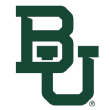
12. Baylor Bears
The Bears are very good and should be able to beat South Carolina with their length and offensive rebounding. But South Carolina is the type of team that will give Baylor problems. Baylor has scored 90 paint points in the first two rounds, most in the tournament field. The Bears now face a South Carolina team that has allowed 19.0 paint points per game in the first two rounds, fewest in the field.
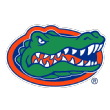
13. Florida Gators
The Gators have done a great job of buying into defense and working to become a better offensive team. Devin Robinson has blossomed into a top-notch player, and every Gator seems to be embracing being a star in their respective roles. Even without John Egbunu, Florida has allowed 0.79 points per possession in this year's NCAA tournament, the most efficient defense in the field. The Gators held Virginia to 39 points in the round of 32, the fewest scored by an ACC team in NCAA tournament history.

14. Butler Bulldogs
The Bulldogs have a tough draw, with the fast pace and inside strength of North Carolina. However, Butler has traditionally done well in slowing down the Tar Heels and making it a half-court game. This will be a unique challenge, as Carolina should be healthier and hungrier. If the Heels take Butler as seriously as they should, Butler will have a tough time in this one.
 15. Xavier Musketeers
15. Xavier Musketeers
Chris Mack is an outstanding coach. To lose Edmond Sumner to injury, lose a bunch of games because of it, but then band his group together and make the Sweet 16 is nothing short of remarkable. But beating a bigger and more athletic Arizona team and the winner of Gonzaga-West Virginia is asking a lot.
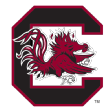
16. South Carolina Gamecocks
It was amazing to see South Carolina, a team that has been offense-challenged at times all season, hang 65 on Duke in the second half and make shots from everywhere. South Carolina is 124th in the country in offensive efficiency, 246th in 3-point shooting and 301st in 2-point accuracy. Yet, South Carolina rose to the occasion and beat Duke in a magnificent performance on both ends of the floor, wearing down the more talented Blue Devils. South Carolina is elite on the defensive end. To advance, the Gamecocks need to be good on offense, too. Baylor is a good draw, and the East bracket is the most wide open of the four.
